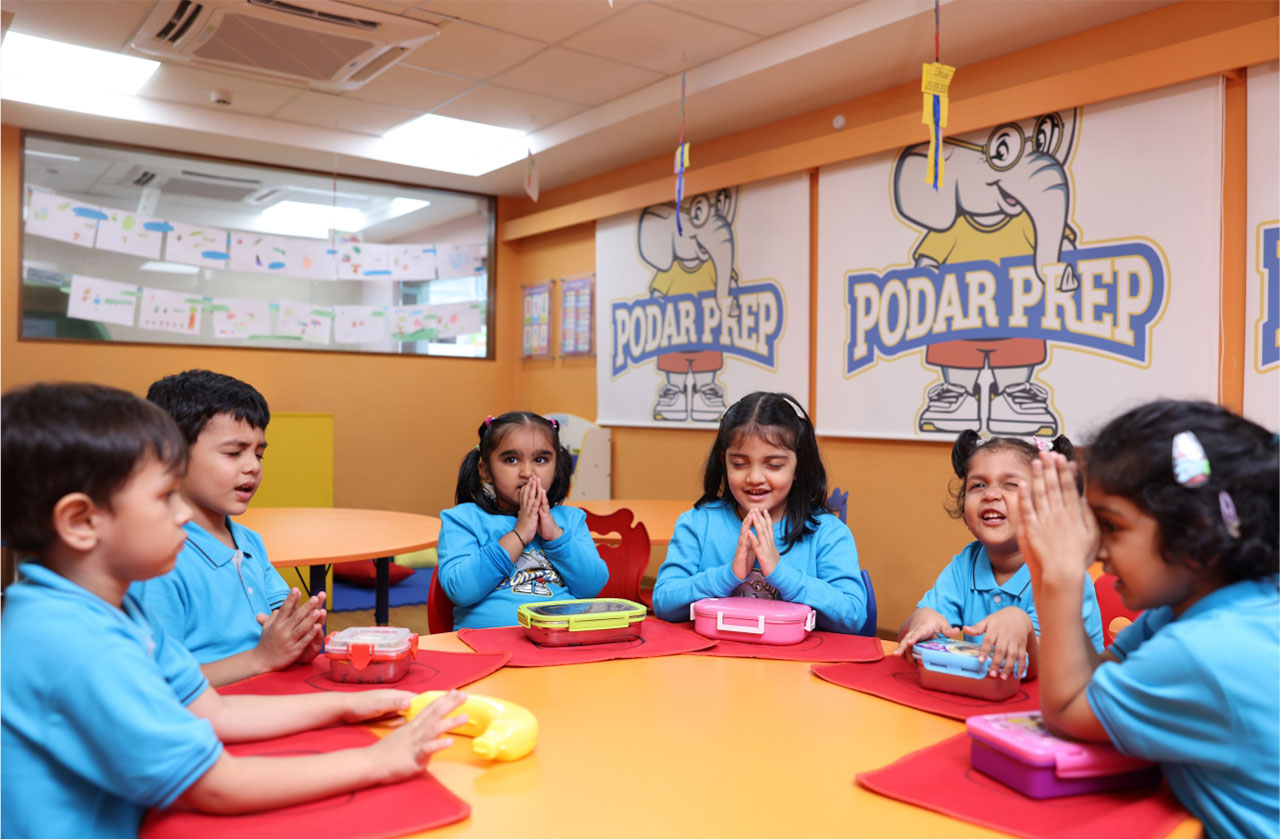Teaching Your Children Good Table Manners: A Recipe for Success
Good table manners are more than just rules; they reflect respect, courtesy, and social skills. Teaching your children proper table etiquette is an invaluable life lesson that will serve them well in various social settings. At Podar International School, we believe in nurturing well-rounded individuals, including instilling good table manners. Let’s explore practical strategies and tips for teaching your children the art of dining etiquette.
The Importance of Table Manners:
Table manners are not just about appearances; they are crucial in social interactions and relationships. Here are some reasons why teaching your children good table manners is essential:
Respect: Good table manners demonstrate respect for others at the table. This respect extends to valuing everyone's meal time, conversation, and effort.
Confidence: Knowing proper dining etiquette can boost your child's confidence in social situations, whether at a friend's house, a restaurant, or a formal event.
Health and Hygiene: Teaching children to eat with proper utensils, avoid double-dipping, and cover their mouths when they cough or sneeze helps prevent the spread of germs and promotes a hygienic dining environment.
Professional Advancement: As children grow into adults, they may attend business meetings, interviews, or corporate dinners where good table manners are essential for making a positive impression.
Cultural Awareness: Learning dining etiquette teaches children about different cultures and customs, fostering cultural sensitivity and acceptance.
Practical Tips for Teaching Good Table Manners:
Start Early: Start teaching table manners when your child is old enough to sit at a table. Consistency from an early age sets the foundation for lifelong habits.
Lead by Example: Children learn by observing. Model good table manners yourself, and your children are more likely to follow suit.
Basic Etiquette: Start with the basics. Teach your child to use utensils, chew with closed mouths, and say "please" and "thank you."
Seating Arrangement: Explain the importance of waiting for everyone to be seated before starting the meal. This simple rule promotes patience and consideration.
Napkin Use: Show your child how to place the napkin on their lap and use it to wipe their mouth. Emphasise the importance of keeping the napkin in their lap, not on the table.
Utensil Placement: Teach your child the continental style of holding utensils (knife and fork) when cutting and eating food. Demonstrate how to rest utensils on the plate between bites and how to signal when they've finished eating.
Respect for Others: Teach your child to wait their turn to speak and listen actively when others are talking. Discuss the importance of not interrupting or talking with a full mouth.
Avoiding Distractions: Encourage your child to put away electronic devices during meals to promote conversation and mindfulness while eating.
Fun and Engaging Activities:
Make learning table manners enjoyable with these activities:
Role Play: Set up a pretend dining scenario where you and your child take turns playing the host and guest. Practice table manners in a playful way.
Table Setting: Involve your child in setting the table correctly. Teach them the proper placement of utensils, plates, and glasses.
Restaurant Nights: Occasionally, turn dinner at home into a restaurant-style experience. Have your child create a menu, take orders, and serve the meal while practising good manners.
Manners Chart: Create a chart that tracks your child's progress with table manners. Offer rewards or privileges for achieving specific goals.
Appropriate Topics: Guide your child on proper mealtime conversation topics. Encourage them to share positive experiences and interests and ask open-ended questions.
Thanking the Cook: Instill the habit of thanking the person who prepared the meal, whether a family member or a restaurant chef.
Handling Mistakes Gracefully: If your child makes a mistake or spills something, teach them to remain calm and use the appropriate utensils or napkins to clean up.
Handling Challenges:
It's natural for children to make mistakes as they learn. Here's how to address some common challenges:
Picky Eaters: Encourage your child to try a variety of foods. Respect their preferences while gently introducing new options.
Fidgeting: Some children may struggle with sitting still during meals. Offer engaging conversation and minimise distractions to help them stay focused.
Interrupting: If your child interrupts, calmly remind them to wait their turn to speak. Model patient listening.
Messy Eaters: Messes happen. Teach your child to clean up after themselves, emphasising responsibility.
The Role of Positive Reinforcement:
Reward your child's efforts to practice good table manners with praise and positive reinforcement. Offer specific compliments when they demonstrate proper etiquette. This positive feedback reinforces their behaviour and motivates them to use good table manners.
Teaching your children good table manners is a valuable investment in their personal development. It equips them with essential life skills that extend beyond the dining table, promoting respect, confidence, and cultural awareness. At Podar International School, we believe in nurturing well-rounded individuals, and good table manners are integral to that journey.
By starting early, modelling behaviour, and making learning enjoyable, parents can help their children master the art of dining etiquette. These skills will serve them well throughout their lives, contributing to their social, personal, and professional success.
Topics

